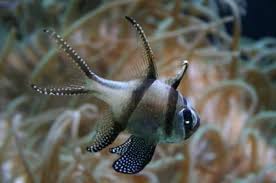The Role of Dragons in Spring and Harvest Honoring Rituals in China
The dragon is one of the most revered symbols in Chinese culture, representing power, prosperity, and renewal. Throughout history, the dragon has played a central role in spring festivals and harvest ceremonies, where communities honor nature’s cycles and seek blessings for agricultural success. From ancient imperial rituals to modern-day celebrations, dragon-related traditions continue to be a vital part of China’s cultural and spiritual life.
This article explores the role of dragons in Chinese rituals dedicated to spring and harvest, highlighting their symbolism, historical significance, and continued influence on modern festivals.
I. The Dragon as a Symbol of Renewal and Fertility
1. The Dragon and the Cycle of Nature
In Chinese cosmology, the dragon is deeply connected to the forces of nature, especially water, rain, and wind. These elements are essential for the renewal of life in spring and the abundance of crops in harvest season.
- In ancient beliefs, dragons controlled the rain, which was crucial for agricultural prosperity.
- The awakening of the dragon in spring signified the start of a new agricultural cycle, making it an ideal symbol for rituals of renewal and fertility.
- Many farmers and emperors prayed to dragons for seasonal balance, ensuring that spring rains came at the right time and harvests were bountiful.
Thus, dragons became the ultimate protectors of the land and the people who depended on it for survival.
II. Dragon Rituals in Spring Honoring Ceremonies
1. The Festival of the Awakening Dragon (龙抬头, Lóng Tái Tóu)
One of the most significant dragon-related spring festivals is Lóng Tái Tóu (龙抬头), or “The Dragon Raising Its Head.”
- Celebrated on the second day of the second lunar month, this festival marks the dragon’s emergence from its winter rest, symbolizing the return of life and the arrival of spring rains.
- Traditionally, farmers performed rituals to honor the Dragon King (龙王, Lóngwáng), the deity believed to control rainfall and ensure a good growing season.
- Incense offerings, dragon dances, and ceremonial food preparations were central to this festival, expressing gratitude and seeking protection.
- People believed that cutting their hair on this day would bring them good fortune, as it symbolized a fresh start in harmony with the dragon’s awakening.
This festival reflects the deep-rooted belief that the dragon’s energy is essential for the renewal of nature and the well-being of the people.
2. Dragon Well Tea and the Spring Rituals in Zhejiang
In the Zhejiang province, a famous ritual associated with spring and dragons revolves around Longjing (龙井) tea, or “Dragon Well Tea”.
- The first tea leaves harvested in spring are believed to contain the essence of the dragon, making them sacred and highly valued.
- During tea-picking ceremonies, farmers offer prayers to the Dragon King, asking for favorable weather and a bountiful harvest.
- This ritual highlights the belief that dragons bless the land with fertility, ensuring good crops and economic prosperity for the year ahead.
The connection between dragons, spring, and tea culture shows how deeply the dragon’s role is integrated into agricultural traditions and spiritual practices.
III. Dragons in Harvest Rituals and Celebrations
1. The Autumn Dragon Festival (秋龙节, Qiū Lóng Jié)
After months of hard work in the fields, Chinese farmers hold harvest festivals to express gratitude to the dragon spirits. One of the most significant is the Autumn Dragon Festival (秋龙节), celebrated in various parts of China.
- Farmers offer the first harvested grains to the Dragon King, acknowledging his role in bringing rain and ensuring a successful crop.
- Large dragon-shaped structures made of rice, wheat, and corn are displayed in temples and village centers.
- Some regions hold “Dragon Processions,” where people carry dragon totems through fields to bless the land for future harvests.
This festival embodies the belief that dragons not only bring seasonal rains but also ensure the cycle of abundance and prosperity continues.
2. The Role of the Dragon Dance in Harvest Celebrations
One of the most iconic elements of Chinese harvest celebrations is the Dragon Dance (舞龙, Wǔ Lóng).
- In ancient times, the Dragon Dance was performed at the end of the harvest season to thank the dragon spirits for their protection.
- Farmers believed that dancing with the dragon would drive away evil forces and ensure that the next year’s crops would be even more abundant.
- The dance, featuring a long dragon figure manipulated by multiple performers, mimics the movement of the dragon through clouds, symbolizing its control over the rains and seasons.
The Dragon Dance remains a central part of modern Chinese harvest festivals, preserving the spiritual connection between dragons, nature, and human survival.
IV. Imperial Dragon Rituals for Agricultural Blessings
1. The Dragon Worship Ceremonies of Chinese Emperors
Throughout history, Chinese emperors performed elaborate dragon rituals to ensure the prosperity of their empire.
- The Temple of Heaven (天坛, Tiāntán) in Beijing was where emperors conducted rituals to pray for good harvests, often invoking dragon spirits for rain and agricultural success.
- The emperor, regarded as the “Son of the Dragon,” would offer sacrifices of silk, jade, and grain to demonstrate his devotion to the celestial dragons.
- These rituals were seen as a way to maintain harmony between heaven, earth, and the people, reinforcing the emperor’s divine authority.
The imperial connection to dragon rituals highlights how deeply dragons were woven into the political, religious, and agricultural life of China.
V. The Dragon’s Influence on Modern Spring and Harvest Celebrations
1. Dragon Boat Festival: A Celebration of Water and Prosperity
While the Dragon Boat Festival (端午节, Duānwǔ Jié) is best known for honoring the poet Qu Yuan, it also has strong agricultural connections.
- The racing dragon boats symbolize the dragon’s power over rivers and water, reinforcing its role in ensuring prosperity.
- In southern China, this festival is closely tied to prayers for good fishing and farming seasons, linking it to the traditional dragon-honoring rituals of spring and harvest.
2. Dragon Symbolism in Modern Chinese Agriculture
Even today, Chinese farmers and rural communities honor the dragon’s presence in agriculture:
- Dragon motifs appear on farm tools, irrigation structures, and village temples, symbolizing divine protection.
- New Year celebrations often include dragon-themed prayers for fertile land and abundant crops.
- Some rural regions still practice small-scale dragon rituals before planting season, reflecting a belief in the dragon’s ability to bring favorable weather.
This ongoing reverence shows that the dragon’s role in seasonal cycles and agricultural prosperity remains deeply respected.
Conclusion: The Eternal Guardian of Seasons and Harvests
From ancient imperial ceremonies to modern farming traditions, dragons have played a pivotal role in spring and harvest rituals in China. As guardians of water, rain, and fertility, they ensure the balance of nature and the abundance of crops. Whether through grand temple rituals, village dances, or symbolic offerings, the dragon remains an eternal protector of China’s agricultural traditions and cultural heritage.
Even in contemporary China, the dragon continues to symbolize renewal, prosperity, and harmony with nature, securing its place as a timeless emblem of hope and abundance.

